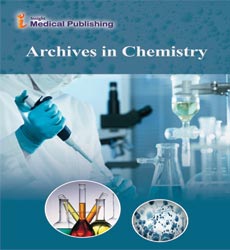Circularly Polarized Luminescence from Uranyl Improves Resolution of Electronic Transitions
Gael Ung
University of Connecticut, United States
Received: June 10, 2022; Accepted: June 13, 2022; Published: June 30, 2022
Abstract
The first reported example of circularly polarized luminescence from a chiral, molecular uranyl (UO22+) complex in solution is presented. This uranyl chiroptical activity is enabled by complexation with ibuprofen, an enantiopure chiral carboxylate ligand. Salt metathesis between [UO2Cl2(thf)2]2 and the sodium ibuprofenate salts results in the formation of the anionic tris complexes; these complexes are found to be luminescent in solution, both under visible excitation, directly targeting the metal, and through sensitization by UV absorption and energy transfer from the ligand. Each enantiomer displays both circular dichroism and circularly polarized luminescence (CPL) with |gabs| ≤ 8.1 × 10–2 and |glum| ≤ 8.0 × 10–3 under UV excitation, comparable to chiral transition metal complexes or purely organic emitters. The strength of the CPL emission is found to be comparable following excitation of either the ligand or metal directly. Further, use of CPL allows for resolution of subcomponents of the emission spectrum not previously possible at room temperature using standard fluorescence techniques. Observation of CPL following direct uranyl excitation presents a new tool for probing speciation of uranyl complexes when chiral ligands are used, without the need for synthetic modification to incorporate a suitable chromophore, and could enable the design of improved ligands for uranyl extraction from wastewater.
Open Access Journals
- Aquaculture & Veterinary Science
- Chemistry & Chemical Sciences
- Clinical Sciences
- Engineering
- General Science
- Genetics & Molecular Biology
- Health Care & Nursing
- Immunology & Microbiology
- Materials Science
- Mathematics & Physics
- Medical Sciences
- Neurology & Psychiatry
- Oncology & Cancer Science
- Pharmaceutical Sciences
